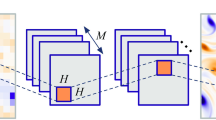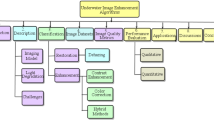Abstract
Marine oil spills are among the most significant sources of marine pollution. Synthetic aperture radar (SAR) has been used to improve oil spill observations because of its advantages in oil spill detection and identification. However, speckle noise, weak boundaries, and intensity inhomogeneity often exist in the oil spill regions of SAR imagery, which will seriously affect the accurate identification of oil spills. To enhance marine oil spill segmentation of SAR images, a fast, edge-preserving framework based on the distance-regularized level set evolution (DRLSE) model was proposed. Specifically, a bilateral filter penalty term is designed and incorporated into the DRLSE energy function (BF-DRLSE) to preserve the edges of oil spills, and an adaptive initial box boundary was selected for the DRLSE model to reduce the operation time complexity. Two sets of RadarSat-2 SAR data were used to test the proposed method. The experimental results indicate that the bilateral filtering scheme incorporated into the energy function during level set evolution improved the stability of level set evolution. Compared with other methods, the proposed improved BF-DRLSE algorithm displayed a higher overall segmentation accuracy (97.83%). In addition, using an appropriate initial box boundary for the DRLSE method accelerated the global search process, improved the accuracy of oil spill segmentation, and reduced computational time. Therefore, the results suggest that the proposed framework is effective and applicable for marine oil spill segmentation.
Similar content being viewed by others
Data Availability Statement
The datasets generated during and/or analyzed during the current study are available from the corresponding author on reasonable request.
References
Adler D C, Ko T H, Fujimoto J G. 2004. Speckle reduction in optical coherence tomography images by use of a spatially adaptive wavelet filter. Optics Letters, 29(24): 2 878–2 880, https://doi.org/10.1364/OL.29.002878.
Alves T M, Kokinou E, Zodiatis G, Radhakrishnan H, Panagiotakis C, Lardner R. 2016. Multidisciplinary oil spill modeling to protect coastal communities and the environment of the Eastern Mediterranean Sea. Scientific Reports, 6: 36882, https://doi.org/10.1038/srep36882.
Argenti F, Lapini A, Bianchi T, Alparone L. 2013. A tutorial on speckle reduction in synthetic aperture radar images. IEEE Geoscience and Remote Sensing Magazine, 1(3): 6–35, https://doi.org/10.1109/MGRS.2013.2277512.
Cheng Y C, Li X F, Xu Q, Garcia-Pineda O, Andersen O B, Pichel W G. 2011. SAR observation and model tracking of an oil spill event in coastal waters. Marine Pollution Bulletin, 62(2): 350–363, https://doi.org/10.1016/j.marpolbul.2010.10.005.
Chiau W Y. 2005. Changes in the marine pollution management system in response to the Amorgos oil spill in Taiwan. Marine Pollution Bulletin, 51(8–12): 1 041–1 047, https://doi.org/10.1016/j.marpolbul.2005.02.048.
Cisneros-Montemayor A M, Sumaila U R. 2010. A global estimate of benefits from ecosystem-based marine recreation: potential impacts and implications for management. Journal of Bioeconomics, 12(3): 245–268, https://doi.org/10.1007/s10818-010-9092-7.
de Andrade M L S C, Skeika E, Aires S B K. 2017. Segmentation of the prostate gland in images using prior knowledge and level set method. In: 2017 Workshop of Computer Vision (WVC). IEEE, Natal, Brazil. p.31–36.
Espeseth M M, Brekke C, Jones C E, Holt B, Freeman A. 2020. The impact of system noise in polarimetric SAR imagery on oil spill observations. IEEE Transactions on Geoscience and Remote Sensing, 58(6): 4 194–4 214, https://doi.org/10.1109/TGRS.2019.2961684.
Fawwaz I, Zarlis M, Suherman, Rahmat R F. 2018. The edge detection enhancement on satellite image using bilateral filter. In: The 10th International Conference Numerical Analysis in Engineering. IOP, Banda Aceh, Indonesia. p.012052, https://doi.org/10.1088/1757-899X/308/1/012052.
Ganta R R, Zaheeruddin S, Baddiri N, Rao R R. 2012. Segmentation of oil spill images with illumination-reflectance based adaptive level set model. IEEE Journal of Selected Topics in Applied Earth Observations and Remote Sensing, 5(5): 1 394–1 402, https://doi.org/10.1109/JSTARS.2012.2201249.
Gautama B G, Longépé N, Fablet R, Mercier G. 2016. Assimilative 2-D Lagrangian transport model for the estimation of oil leakage parameters from SAR images: application to the Montara oil spill. IEEE Journal of Selected Topics in Applied Earth Observations and Remote Sensing, 9(11): 4 962–4 969, https://doi.org/10.1109/JSTARS.2016.2606110.
Jackson C R, Apel J R. 2004. Synthetic Aperture Radar: Marine User’s Manual. 457p. http://www.sarusersmanual.com/. Accessed on 2020-02-24.
Jubai A, Jing B, Yang J. 2006. Combining fuzzy theory and a genetic algorithm for satellite image edge detection. International Journal of Remote Sensing, 27(14): 3 013–3 024, https://doi.org/10.1080/01431160600554371.
Karantzalos K, Argialas D. 2008. Automatic detection and tracking of oil spills in SAR imagery with level set segmentation. International Journal of Remote Sensing, 29(21): 6 281–6 296, https://doi.org/10.1080/01431160802175488.
Li C M, Xu C Y, Gui C F, Fox M D. 2010. Distance regularized level set evolution and its application to image segmentation. IEEE Transactions on Image Processing, 19(12): 3 243–3 254, https://doi.org/10.1109/TIP.2010.2069690.
Li Y, Zhang Y Z, Chen J, Zhang H S. 2014. Improved compact polarimetric SAR quad-pol reconstruction algorithm for oil spill detection. IEEE Geoscience and Remote Sensing Letters, 11(6): 1 139–1 142, https://doi.org/10.1109/lgrs.2013.2288336.
Liu J Y, Zhang Z N, Yang H M. 2015. A variational level set remote sensing SAR image segmentation approach for oil spill detecting based on fuzzy cluster. Applied Mechanics and Materials, 719-720: 1 049–1 055, https://doi.org/10.4028/www.scientific.net/amm.719-720.1049.
Osher S, Sethian J A. 1988. Fronts propagating with curvature-dependent speed: algorithms based on Hamilton-Jacobi formulations. Journal of Computational Physics, 79(1): 12–49, https://doi.org/10.1016/0021-9991(88)90002-2.
Rischard J F. 2001. High noon: we need new approaches to global problem-solving, fast. Journal of International Economic Law, 4(3): 507–525, https://doi.org/10.1093/jiel/4.3.507.
Routray S, Ray A K, Mishra C. 2018. Image denoising by preserving geometric components based on weighted bilateral filter and curvelet transform. Optik, 159: 333–343, https://doi.org/10.1016/j.ijleo.2018.01.096.
Sethian J A. 1999. Level Set Methods and Fast Marching Methods: Evolving Interfaces in Computational Geometry, Fluid Mechanics, Computer Vision, and Materials Science, 2nd edn. Cambridge University Press, Cambridge, UK. 378p.
Shao Z, Zhai H Y, Liu X Y. 2013. Segmentation of oil spill images based on SFCM and level set methods. Journal of Changchun University of Science and Technology (Natural Science Edition), 36(3–4): 134–137, https://doi.org/10.3969/j.issn.1672-9870.2013.03.040. (in Chinese with English abstract)
Solberg A H S. 2012. Remote sensing of ocean oil-spill pollution. Proceedings of the IEEE, 100(10): 2 931–2 945, https://doi.org/10.1109/JPROC.2012.2196250.
Song D M, Wang B, Chen W M, Wang N, Yu S Y, Ding Y, Liu B, Zhen Z J, Xu M M, Zhang T. 2018. An efficient marine oil spillage identification scheme based on an improved active contour model using fully polarimetric SAR imagery. IEEE Access, 6: 67 959–67 981, https://doi.org/10.1109/access.2018.2876173.
Song H H, Huang B, Zhang K H. 2013. A globally statistical active contour model for segmentation of oil slick in SAR imagery. IEEE Journal of Selected Topics in Applied Earth Observations and Remote Sensing, 6(6): 2 402–2 409, https://doi.org/10.1109/JSTARS.2013.2255119.
Sussman M, Fatemi E. 1999. An efficient, interface-preserving level set redistancing algorithm and its application to interfacial incompressible fluid flow. SIAM Journal on Scientific Computing, 20(4): 1 165–1 191, https://doi.org/10.1137/S1064827596298245.
Sussman M, Smereka P, Osher S. 1994. A level set approach for computing solutions to incompressible two-phase flow. Journal of Computational Physics, 114(1): 146–159, https://doi.org/10.1006/jcph.1994.1155.
Tang L L, Jiang P, Dai C D, Jackson T J. 1996. Evaluation of smoothing filters suppressing speckle noise on SAR images. Remote Sensing of Environment China, 11(3): 206–211. (in Chinese with English abstract)
Tomasi C, Manduchi R. 1998. Bilateral filtering for gray and color images. In: Sixth International Conference on Computer Vision. IEEE, Bombay, India. p.839–846.
Topouzelis K, Psyllos A. 2012. Oil spill feature selection and classification using decision tree forest on SAR image data. ISPRS Journal of Photogrammetry and Remote Sensing, 68: 135–143, https://doi.org/10.1016/j.isprsjprs.2012.01.005.
Wang W D, Sheng H, Liu S W, Chen Y L, Wan J H, Mao J J. 2019. An edge-preserving active contour model with bilateral filter based on hyperspectral image spectral information for oil spill segmentation. In: 2019 10th Workshop on Hyperspectral Imaging and Signal Processing: Evolution in Remote Sensing (WHISPERS). IEEE, Amsterdam, Netherlands. p.1–5, https://doi.org/10.1109/WHISPERS.2019.8921042.
Wu Y F, He C J, Yang L, Su M T. 2017. A backscattering-suppression-based variational level-set method for segmentation of SAR oil slick images. IEEE Journal of Selected Topics in Applied Earth Observations and Remote Sensing, 10(12): 5 485–5 494, https://doi.org/10.1109/JSTARS.2017.2740979.
Xu B, Cui Y, Zuo B, Yang J, Song J S. 2016. Polarimetric SAR image filtering based on patch ordering and simultaneous sparse coding. IEEE Transactions on Geoscience and Remote Sensing, 54(7): 4 079–4 093, https://doi.org/10.1109/TGRS.2016.2536648.
Yang X, Gao X B, Li J, Han B. 2014. A shape-initialized and intensity-adaptive level set method for auroral oval segmentation. Information Sciences, 277: 794–807, https://doi.org/10.1016/j.ins.2014.03.014.
Yang X, Gao X B, Tao D C, Li X L, Li J. 2015. An efficient MRF embedded level set method for image segmentation. IEEE Transactions on Image Processing, 24(1): 9–21, https://doi.org/10.1109/TIP.2014.2372615.
Zhang G S, Perrie W, Zhang B, Khurshid S, Warner K. 2018. Semi-empirical ocean surface model for compact-polarimetry mode SAR of RADARSAT Constellation Mission. Remote Sensing of Environment, 217: 52–60, https://doi.org/10.1016/j.rse.2018.08.006.
Zhang K H, Zhang L, Song H H, Zhang D. 2013. Reinitialization-free level set evolution via reaction diffusion. IEEE Transactions on Image Processing, 22(1): 258–271, https://doi.org/10.1109/TIP.2012.2214046.
Zhang T, Lü X L, Qian J, Hong J, Li Y. 2016. Bilateral linear SURE-based SAR interferogram filter. Remote Sensing Letters, 7(12): 1 190–1 198, https://doi.org/10.1080/2150704x.2016.1225169.
Acknowledgment
The authors thank the reviewers and editors for their professional and diligent works.
Author information
Authors and Affiliations
Corresponding author
Additional information
Supported by the National Key R&D Program (No. 2017YFC1405600), the National Natural Science Foundation of China (Nos. 41776182, 42076182), and the Natural Science Foundation of Shandong Province (No. ZR2016DM16)
Rights and permissions
About this article
Cite this article
Wang, W., Sheng, H., Chen, Y. et al. A fast, edge-preserving, distance-regularized model with bilateral filtering for oil spill segmentation of SAR images. J. Ocean. Limnol. 39, 1198–1210 (2021). https://doi.org/10.1007/s00343-020-0105-7
Received:
Accepted:
Published:
Issue Date:
DOI: https://doi.org/10.1007/s00343-020-0105-7




